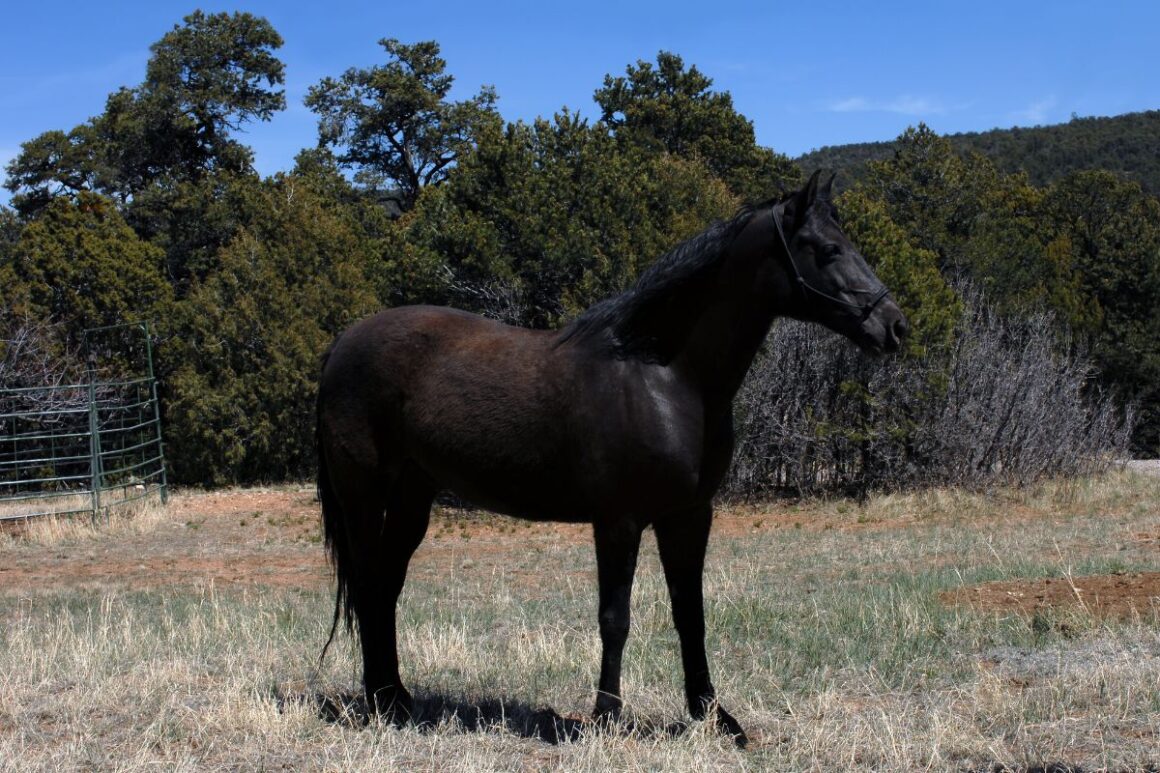The Ozark Mountains stretch across the southern half of Missouri and create a beautiful highland region with challenging terrain. Early settlers here needed solid and sure-footed horses and developed the Missouri Fox Trotter, a breed known for their smooth, fox trot gait. They remain popular today as trail and ranch horses and are found throughout the United States and in Europe.

Settlers and earlier generations relied upon their horses for transportation, agricultural work, and power around their homesteads. Horses helped settle and build the Midwestern part of the United States, and then the west. The geographic isolation of the Ozark Mountains in southern Missouri helped create a distinct breed of horses, known for their ambling gait, called the Fox Trot. The Fox Trot dance started in 1914 and mimics the horse’s gait. Today, the uses of these horses have changed some, but they are still beloved by those who own and ride them.
History of the Missouri Fox Trotter
People from Tennessee, Virginia, and Kentucky settled in Missouri and brought their horses with them. This included Arabians, Morgans, Standardbreds, Saddlebreds, and Tennessee Walking Horses. A distinct breed was soon recognizable in the Ozark Mountains. The horses started to be known for the state where they developed after Missouri became a state in 18221, and their distinct gait, the Fox Trot.
Although the breed dates to the early 1800s, the registry, the Missouri Fox Trotter Horse Breed Association, didn’t start until 1948. Its headquarters is in Ava, Missouri. This is also the location of the annual Missouri Fox Trotting Horse World Show and Celebration, which is held in September.
A European breed registry was started in 1992 after Queen Elizabeth of England imported a few to her stables. This registry is steadily growing as the horses become popular throughout the world. The Foundation Foxtrotter Heritage Association is a second registry in the United States. It started in 2006 to preserve older bloodlines.
Breed Characteristics
Missouri Fox Trotter breed characteristics are stockier than other gaited horses. Their average height is between 14 and 16 hands, while their weight is 900 to 1,200 pounds. The horses have large, clean bones and good-sized hooves that are adept at navigating difficult terrain. The shoulders are sloping, as is the hip, and this contributes to their ability to perform the smooth Fox Trot gait.
Overall, they are muscular horses. Stock people predominantly used them for working cattle or traveling the trails in the Ozark Mountains. Pony-sized Missouri Fox Trotters are registered separately.
Horses are solid colors like bay, brown, and chestnut, and can have white markings. The breed association also recognizes Pinto horses. Their temperament is known as calm and kind. Horses also exhibit excellent stamina and endurance. All these are reasons why they are popular as endurance, trail, and ranch horses.
The Fox Trot
The Fox Trot is the signature gait of the Missouri Fox Trotter and replaces the trot of other horses. The breed also has a four-beat walk and a canter, but the Fox Trot is the preferred and famous gait.
It’s a diagonal gait and looks and feels like walking with the front feet and trotting with the hind feet. The Fox Trot is also called an ambling gait. It is very smooth because it eliminates the suspension of a normal trot with one foot always on the ground. It looks like a sliding action when you watch a horse Fox Trot from the ground, with the hind hooves sliding to the location the front hooves just vacated.
Horses can average 10 miles per hour for a short distance at a Fox Trot, and this made them desirable for transportation. It’s faster than the six to eight miles per hour of a regular trot, and the Fox Trot also conserves energy.
Missouri Fox Trotter Horses Today
The Missouri Fox Trotter horses are one of many gaited horse breeds that people love and enjoy. Today, trail and ranch or stock work are still their primary uses. You’ll also find members of the breed just about anywhere that people are using horses. They are introducing new riders to equestrian sports in lesson programs, helping humans in therapeutic riding centers, and are found in some sport disciplines like barrel racing. Trail riding is the primary use of close to 90% of all horses, according to the breed association. They’ll continue dominating the discipline because of their unique characteristics.
Sources: Missouri Fox Trotter Horse Breed Association, Missouri Fox Trotter Connection, Equus Magazine, and Horse Illustrated.
